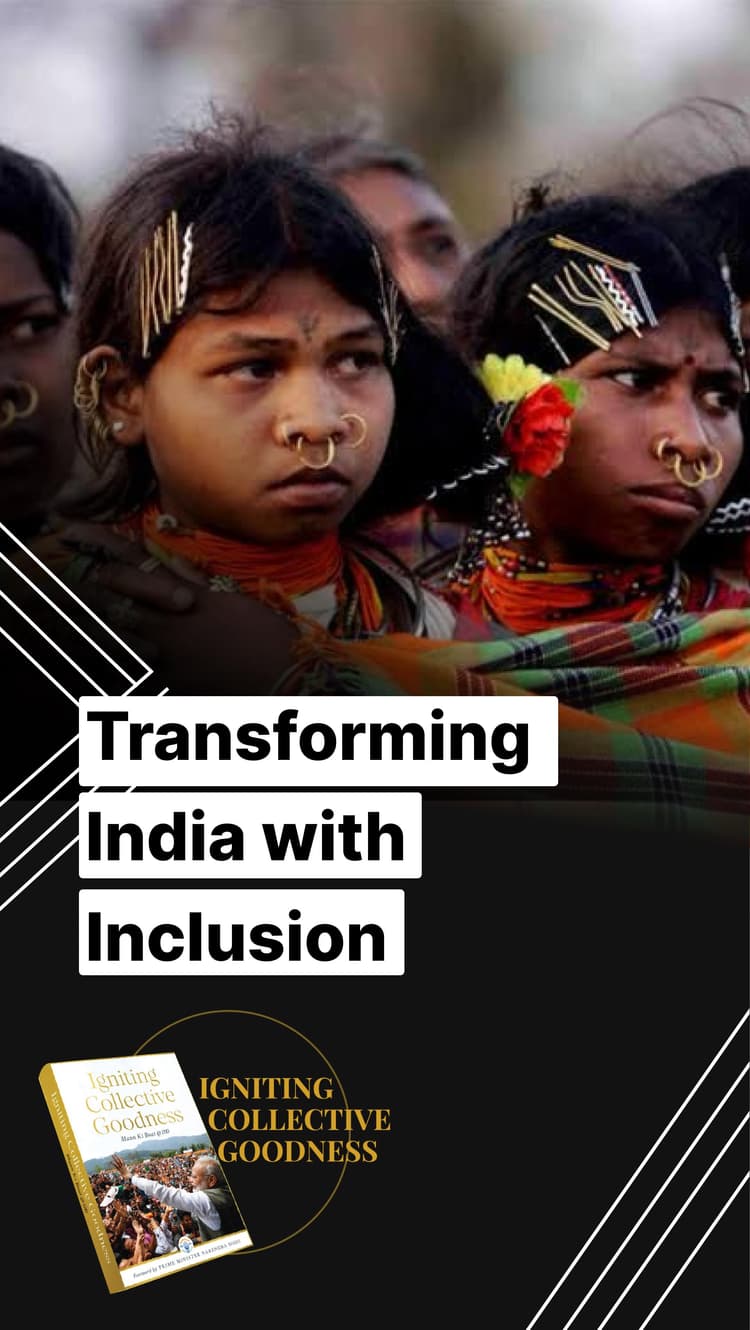Pioneering the Planet's Sustainable Crusade
Harnessing Green Finance and Nature-Based Solutions Will Enable India to Emerge as a Global Role Model in Climate Mitigation and Economic Resilience

The World Economic Forum, in its annual Global Risk Report, featured the environmental crisis in six of the top ten global risks over the coming decade. The 2018 Kerala floods resulted in losses of $4.25 billion, while other events like the 2017 Bihar floods, Cyclone Vardah in 2016, and the 2015 Chennai floods had equally significant financial impacts. These incidents provide only a hint of the potential GDP losses linked to climate-related disasters to come.
Meanwhile, within a global fight against climate change, India has emerged as a front-runner with its commitment to the Paris Climate Agreement. The country has set ambitious targets for renewable energy, aiming to reach 450 gigawatts of renewable energy capacity by 2030 and has launched the National Action Plan on Climate Change (NAPCC). The Climate Vulnerable Forum has since identified India as one of the few large economies on track to meet its own climate commitments.
The real impact of the climate crisis felt across the continent, matched by the government’s real ambition to meet the challenge of the climate crisis, has put India at the forefront of climate action. But, with projections indicating that India's temperature could increase by 2.7°C by the year 2099, the fight has only just begun.
The World Economic Forum has estimated the world will need to close a $4.1 trillion finance gap in nature by 2050, if it wants to meet its environmental ambitions. The Reserve Bank of India has highlighted that bridging the finance gap in addressing the nature and climate crisis would require an allocation of about 2.5% of India’s annual GDP towards green finance. To address climate action effectively, India's Nationally Determined Contribution estimates a requirement of approximately $170 billion per year, while achieving the target of net-zero emissions by 2070 would necessitate a cumulative investment of $10 trillion, as predicted by the Expert Committee on Sustainable Finance of the International Financial Services Centres Authority.
This gap calls for a strategic, innovative approach to tackling the climate crisis.
Globally, this approach has come in the form of green finance mechanisms. Green finance refers to financial investments flowing into sustainable development projects, and includes mechanisms such as green bonds, which are designated bonds for funding environmentally friendly projects, and green loans, which are loans for eco-friendly projects with potentially lower interest rates. Additionally, carbon trading schemes, where companies can buy or sell government-granted carbon emissions allowances, and investment funds focused on sustainable practices, also form part of green finance.
By directing capital towards projects that have a positive impact on the environment, green finance will play a crucial role in driving the transition to a low-carbon, sustainable economy.
India’s Energy Conservation (Amendment) Bill has already provided the foundation for a domestic carbon market, with the Central Government’s Bureau of Energy Efficiency draft blueprint on its national carbon markets and the introduction of a Carbon Credit Trading Scheme (CCTS) in 2023 quickly building a comprehensive framework for green finance.
Meanwhile, the Securities and Exchange Board of India (SEBI) has introduced an ESG category for mutual funds, allowing asset management companies in India to launch multiple ESG funds. This move, enhancing reporting rigour and transparency, is expected to boost investor confidence in green financing. Effectively utilised, green finance will catalyse India's transition to a low-carbon economy, aligning economic growth with environmental sustainability and climate mitigation goals.
The potential presented by green finance heralds a new era of climate action. But it also provides an opportunity to bring to the forefront the missing link in tackling the climate crisis: nature-based solutions.
Nature-Based Solutions, found in reforestation, wetland restoration, or sustainable agriculture, offer an all-encompassing approach that not only mitigates climate change but actively restores the natural environment. Nature-Based Solutions can act as natural buffers against disasters like floods and droughts, while simultaneously sequestering carbon, preserving water resources, and protecting habitats. Despite this, Nature-Based Solutions have not received adequate attention or investment compared to technological solutions.
The diverse ecosystems across the Indian continent exemplify the crucial link between the climate and nature crisis. The melting of Himalayan glaciers, a consequence of global warming, poses a threat to the water security of millions, affecting agriculture and biodiversity. Rising sea levels and increased cyclonic activity erode coastlines and disrupt marine ecosystems, while altered monsoon patterns lead to habitat loss and reduced agricultural diversity. These changes exacerbate biodiversity loss and disrupt the ecological balance, highlighting the need for integrated solutions to address both climate change and biodiversity loss for a sustainable future in India. This necessitates climate-proofing India's economy as it aims to expand to a $5 trillion economy by 2024, with nature-based solutions being a feasible approach for resilient growth.
Investment in nature-based solutions offers a promising avenue to address both the nature and climate crises, as evidenced by the growing interest of Indian cities like Kochi and Hyderabad, participants in the global Cities4Forests initiative. These cities recognize the extensive benefits natural ecosystems provide in terms of climate change mitigation, food security, water supply, and biodiversity enhancement.
The public sector can enhance investment in nature by integrating natural capital and ecosystem services into asset management and infrastructure solutions. The Zero Budget Natural Farming initiative in Andhra Pradesh exemplifies this approach, focusing on agroecology practices and healthy soil. Remarkably, the project has led to increased crop yields, reduced farming costs, and enhanced soil biodiversity, improving livelihoods and economic well-being. Such strategies underscore the importance of considering natural assets within a nation’s economic framework.
To meet the finance gap left by public investment, a successful carbon finance market for nature recovery will require overcoming challenges where investment risks in nature currently outweigh the returns. Addressing issues like property rights, risk management, and investment structuring is crucial to attract investment. The government's role in setting clear strategies, eliminating policy silos, and developing technical standards and methodologies is vital. This includes facilitating capacity building and business case development for nature-based solutions, leveraging private sector finance, and establishing clear investment pathways. Addressing these needs is key to harnessing nature-based solutions for addressing the interlinked nature and climate crises.
If India can align the climate crisis, the nature crisis, and a streamlined green finance mechanism to address both, it will continue to lead the way in the coming era of climate action. If we can figure it out in India – one of the most economically, politically, geographically, ecologically, and culturally diverse countries in the world – we can figure it out anywhere.
*Note: All $ in $US



































